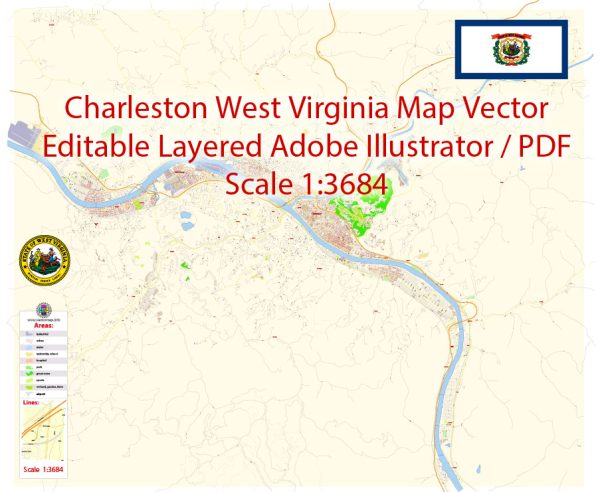Charleston, the capital and largest city of West Virginia, has a rich history of urban development that spans several centuries. Here is an overview of the key historical aspects of Charleston’s urban development:
- Founding and Early Settlement (Late 18th Century):
- Charleston was founded in 1788 by Colonel George Clendenin, who established the town at the confluence of the Elk and Kanawha Rivers.
- The location was strategically chosen for its transportation advantages, as rivers were vital for trade and commerce during this period.
- Transportation and Industry (19th Century):
- The completion of the James River and Kanawha Turnpike in the early 19th century facilitated trade and transportation, contributing to the city’s growth.
- The arrival of the railroad in the mid-19th century further enhanced Charleston’s connectivity and stimulated economic development.
- Industrialization gained momentum, with industries such as salt production, coal mining, and chemical manufacturing becoming prominent contributors to the local economy.
- Civil War Impact:
- During the Civil War, Charleston changed hands multiple times between Union and Confederate forces.
- The war had a significant impact on the city’s development, causing economic hardships and physical damage to infrastructure.
- Post-Civil War Reconstruction (Late 19th Century):
- Charleston experienced a period of reconstruction and recovery after the Civil War, with efforts focused on rebuilding the city’s economy and infrastructure.
- 20th Century Growth:
- The early 20th century saw continued industrial growth, particularly in the chemical and coal industries.
- The completion of the West Virginia State Capitol building in 1932 became a symbol of the city’s importance as the state capital.
- Mid to Late 20th Century:
- Like many American cities, Charleston experienced suburbanization and population shifts in the mid-20th century.
- Urban renewal projects during the mid-20th century aimed to modernize and revitalize the city but sometimes led to the demolition of historic structures.
- Recent Developments:
- In recent years, Charleston has witnessed efforts to preserve and revitalize its historic downtown area.
- The city has diversified its economy, with healthcare, education, and technology sectors playing an increasingly significant role.
- Cultural and Recreational Assets:
- Charleston is known for its cultural attractions, including the Clay Center for the Arts & Sciences and the West Virginia State Museum.
- The city’s riverfront area has been developed for recreational purposes, offering parks, walking trails, and scenic views.
- Challenges and Opportunities:
- Like many cities, Charleston faces challenges such as economic diversification, population retention, and urban revitalization.
- Efforts to balance preservation of historic elements with modern development continue to shape the city’s urban landscape.
Understanding the historical trajectory of Charleston’s urban development provides insights into the economic, social, and cultural factors that have shaped the city over the centuries.


 Author: Kirill Shrayber, Ph.D.
Author: Kirill Shrayber, Ph.D.